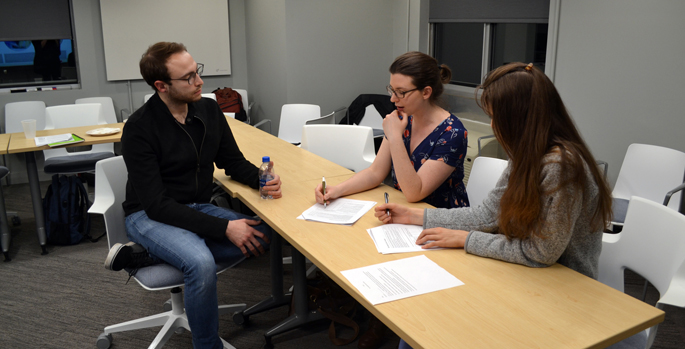
by Jill Clendening
While Vanderbilt University School of Medicine student Jon Alverio was on rotation with the Vanderbilt Health Palliative Care team, he witnessed the confusion patients often have as they try to complete an advance directive for health care, and he decided to do something about it.
Alverio — in collaboration with members of the Palliative Care service, the Center for Biomedical Ethics and Society and VUMC Patient Education — developed an easy-to-understand worksheet that guides patients through completing an advance directive for health care. This legal document details an individual’s wishes regarding their care if they become seriously ill.
The new worksheet, called the Vanderbilt Letter, is modeled after the Stanford Letter Project, which began in 2015 at Stanford School of Medicine as a way to better guide patients in California through health care planning.
“The goal of the Vanderbilt Letter Project is to help patients understand exactly what an advance directive for health care is and how to complete an advance directive so they can receive the kind of care they want and need and so that care is aligned with their values,” Alverio said.
“Our eventual objective is that, with some training and this tool, medical providers at all levels will feel more comfortable guiding conversations with patients about end-of-life care and advance directives.
“Ultimately, this is all about showing kindness to our patients and their families,” Alverio said
The worksheet uses straightforward language to guide individuals through identifying things in life that matter most to them; naming the individual or individuals they want to make decisions for them if they are unable to do so; and clearly spelling out choices for medical care if they are unable to make decisions for themselves.
“The worksheet is meant to be a conversation starter, and it’s a way of sharing conversations that takes the burden off the patients,” said Mohana Karlekar, MD, medical director of Palliative Care. “Typically, once the ice is broken, people will feel more comfortable to continue to have these conversations with their families and their care teams.”
The Vanderbilt Letter Project’s founding team members include Alverio; Kate Payne, JD, RN, and Joe Fanning, PhD, from the Center for Biomedical Ethics and Society; Lane Stiles, director of VUMC Patient Education; and Karlekar, MD, and Molly Williams, AG-ACNP, from the section of Palliative Care. This month, the team trained a group of medical and nurse practitioner students who will use the worksheet in a pilot project with Geriatric Medicine patients as they complete advance directives for health care.
Improving end-of-life care and encouraging conversations between clinicians and patients about advance directives and goals related to their quality of life (also known as goals of care) have been an increasing focus at health care institutions nationwide.
At VUMC, a special committee established in 2018 and led by Bonnie Miller, MD, MMHC, Senior Associate Dean for Health Sciences Education at Vanderbilt University School of Medicine and Executive Vice-President for Educational Affairs, is spearheading efforts to educate Medical Center staff about the importance of having their own advance directives completed and to provide guidance to clinicians as they initiate these often difficult conversations with patients and patient families.
Worksheets that are completed through the Vanderbilt Letter Project can, with the patient’s permission, be attached to an individual’s advance directive for health care and added to their electronic health record so the documents can be referenced by care teams and guide future care, Karlekar said.
Patients are also advised to keep a copy for themselves and make copies for family members and any close friends who could play a role in their future care. Only an estimated one-third of Americans have completed an advance directive.












